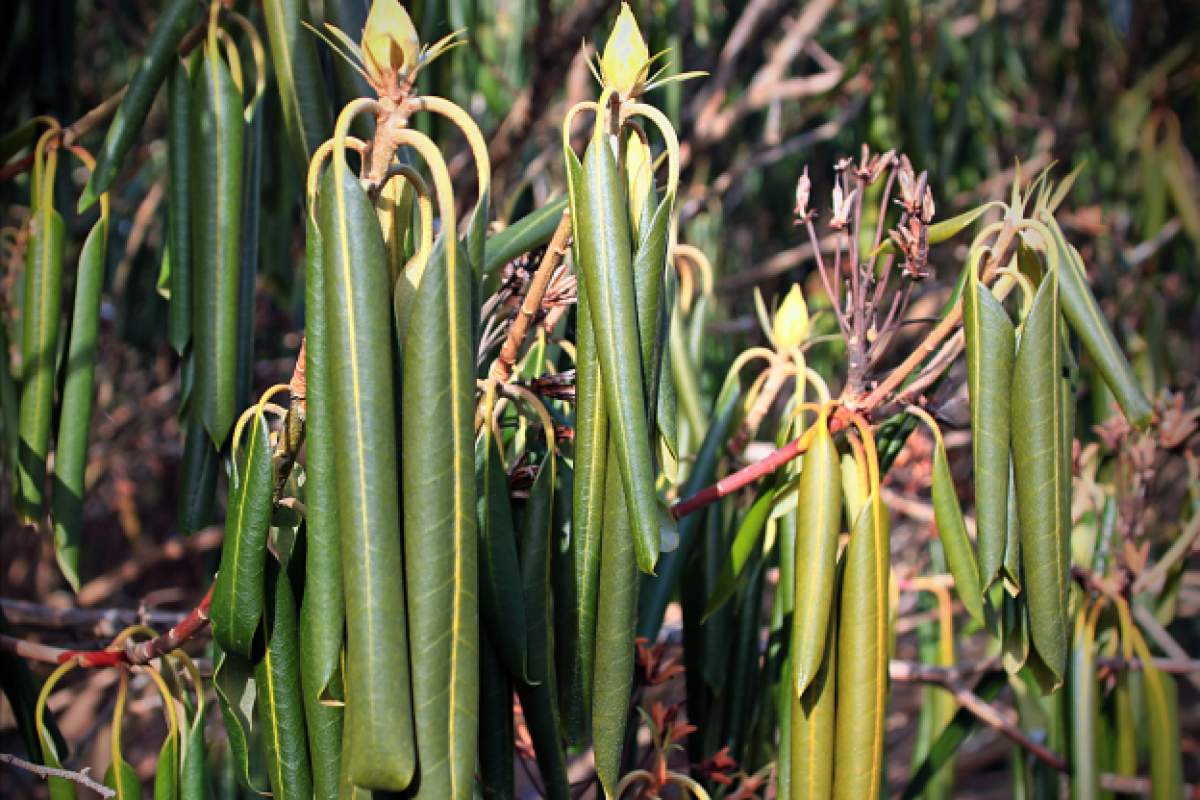
You may have noticed that your rhododendron leaves droop when temperatures are cold. They also seem to roll the edges of their leaves. Fortunately, they unroll when the temperature gets warmer.
The act of drooping and curling changes the amount of a leaf's surface that is exposed to the sun and allows the "rhodo" bushes to shade the surface of their leaves from the winter rays of the sun, as well as from the reflected light from snow and ice.
While deciduous trees become leafless, there is often more intense light striking the broadleaf evergreens that were well-shaded all summer long.
Scientists have reported that cold weather photosynthesis is 50% more effective if broad-leaved shrubs hold their foliage in a drooping position. Also, curling of leaves allows the leaves to thaw more slowly when temperatures go above freezing. Incidentally, the scientific term for the impairment of photosynthesis on sub-freezing but sunny days is photoinhibition.
So next time you walk around your garden on a sunny but cold winter's day and notice the drooping and curling leaves on your broad-leaved evergreens, you can feel proud of them for their truly superb adaptive behavior! You could even casually remark to friends: "My ‘rhodos' are doing a good job of protecting themselves from photoinhibition."









